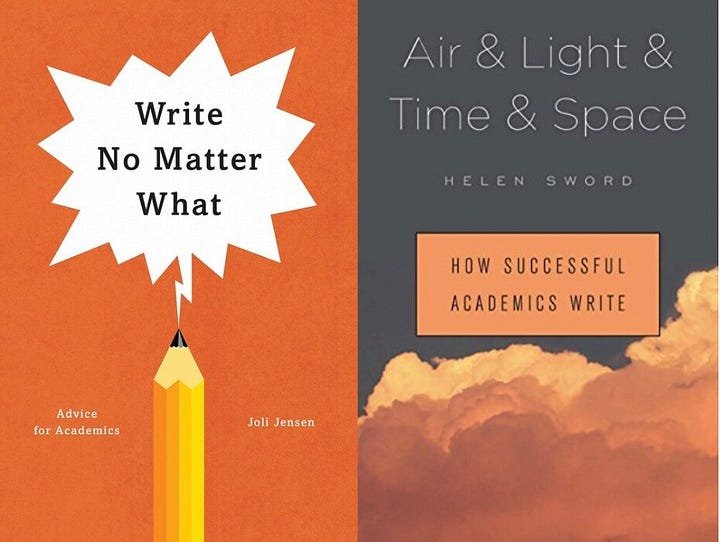Academic Writing as “Mise en Place” Part 2: Assembling your tools and ingredients
When you enter a well-run restaurant, an army of chefs and sous-chefs, grillardins and sauciers have been preparing the ingredients for your delicious meal, many hours before you bite into that delicious appetizer.
A key difference between academics and chefs, though, is that while all chefs undergo rigorous training for their craft, most academics are never trained to write. While chefs practice mise en place — the key culinary technique we covered in our previous post — most PhD students are expected to learn how and what to write on their own! This lack of training is a paradox, especially considering the importance of writing skills to academic success.
Below are some practical tips and tools that can help you with your mise en place.
Assemble your base
Any piece of scholarship involves building upon and extending an existing theoretical conversation. Think of it like joining a new high school. To contribute to the ongoing conversation between the other kids without feeling awkward, you first need to understand what the different groups of kids are talking about.
With academic writing, it’s a similar process. Writing for a journal without bothering to understand what the important conversations and conventions of that journal are is academic suicide. And pretending to extend a theoretical conversation without reading enough also means you risk never going past the dreaded first round.
There are some great tools on the internet to help you figure out the kinds of conversations people are having. Connected Papers, for instance, is a fantastic visual tool to help you find academic papers relevant to your field of work. In just a few clicks you can start mapping the existing conversations other academics are having.
One challenge for academics, though, is the amount of reading and the variety of sources they have to deal with. If you read about 10 articles a week over a standard 30-year academic career, you will have easily gone through ten thousand articles and books.
So you need a system to log what you read. And while there is merit in creating a master matrix where you log every piece you read (see this literature review matrix video), it is worth designing a matrix that you can use for a specific project.
A good exercise is to summarize the key argument or thesis you have just read. It may also be worth logging some specific quotes from the article or book that you are reviewing, since key quotes may help you remember more quickly what struck you as interesting or important in that particular piece. We have created a template here.
Create your magic sauce by comparing and contrasting
Once you have assembled your base, i.e., your key ingredients or concepts, you will want to go further and create the magic sauce of analysis that comes from comparing, contrasting and generally working with your ingredients.
One way to create a “think piece” is by creating a project journal, where you log your notes, reflections, and your emotions related to the project. You can also use your project journal to include the kind of freewriting we evoked earlier as “typing”. Freewriting involves writing freely for ten minutes without stopping, without worrying about syntax or spelling.
Your project journal, if digital, should take advantage of the many tools that now exist. GoodNotes is a great app that allows you to import articles, make notes, and create visuals to help you make sense of what you are reading. We advise you to create a “project journal” for each writing project where you take notes about what you are reading.
Create your recipe: the outline
It is always surprising to see the number of academics who have trouble crafting an outline, or see no merit in it. Yet the outline remains a key tool for developing a clear and structured argument.
Especially as you prepare for focused writing, it is useful to create a 3–4 page outline before you start. You especially want to pay attention to your transitions between sections. If your outline is like the skeleton of your story, the transitions are the joints that help you move the story. Authors often neglect transitions but they are critical in ensuring you will have a smooth writing session.
Be ready to focus
There are lots of academic productivity books out there. Joli Jensen’s book, Write No Matter What, for instance, is a good start. Another favorite is Helen Sword’s book on the way successful academics write and her talk of artisanal habits.
In an intensive writing session like our boot camp, you already have a group of people, writing at the same time as you are. When you are on your own though, it may be worth using an app like Forest.
We find that slicing up our writing work into chunks of “forest time” and having a set number of minimum writing sessions you want to achieve every day is a good way to feel less anxious about writing. Once you think of your writing as a set of say 4 or 5 sessions of 25 minutes you need to complete, writing does not seem as daunting. The idea that one needs to write 6 hours a day to complete a writing project, including a thesis, seems inconsistent with research suggesting that:
“Most expert teachers and scientists set aside only a couple of hours a day, typically in the morning, for their most demanding mental activities, such as writing about new ideas.”
One aspect of writing you may want to avoid is to take long breaks from your writing, which makes it hard to get back to it once your break is over. Persistence seems key to academic success, and one needs to learn various ways to become more persistent.
To sum up, having a productive writing session with your co-authors, or even on your own, involves assembling a well-organized base of ingredients and tools, so that you can dedicate all your attention to writing.
Enjoy the process
We have not talked much about the emotions associated with writing but they are critical to your writing success. Research also shows that it is especially hard for junior, and especially female academics, to develop positive emotions about their own writing. See the graph below from Helen Sword’s book about the percentage of positive emotions that writing evokes:
To develop more positive emotions, it can be useful to remind yourself of the project aspects that seem to you the most appealing and engaging, e.g., why you need to do this work, and the pleasures of doing this project. While the pleasures of writing are different from the sensual pleasures of cooking, there can be joy and calm and peace in academic writing.
Come prepared
To go back to the metaphor of the mise en place, before coming to our writing bootcamp, or to prepare for your writing sessions, you need to come prepared like a chef with:
Vision and goals: A mission statement to guide your motivation. What brought you to this project and why does this project matter to you. A set of writing goals and an idea of how you may reward yourself for reaching each goal.
Environment and tools: A clean workstation. A decluttered laptop where all your files are easy to access and your own writing playlist if you enjoy listening to music.
Ingredients: A literature review matrix organising your thoughts on the literature, and a project journal with your notes as well as freewriting on your research question
Structure: A 3–4 page detailed outline with transitions, which will help form your writing skeleton.
Timing: A schedule for the writing sessions, indicating which part of your project you will work on during the various sessions.
References
Elbow, Peter. 1973. Writing Without Teachers. Oxford, UK: Oxford University Press. Accessed July 12, 2021: http://peterelbow.com/writing_without_teachers.html.
Ericsson, K. Anders, Michael J. Prietula, and Edward T. Cokely. 2007. “The Making of an Expert.” Harvard Business Review, July-August. Accessed July 12, 2021: https://hbr.org/2007/07/the-making-of-an-expert.





